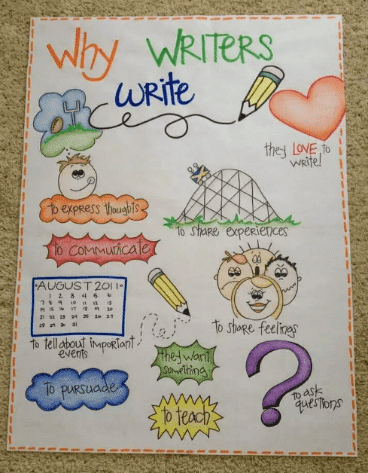Why do we write? There is a purpose to every text that is produced, whether it be as simple as to ‘like’ something on Facebook, or to present a doctoral study.
In this post, you’ll learn what to look out for, or include, in an Author’s Purpose anchor chart. There are also some really useful resources for you to consult.
Table of Contents
- Key elements of a good Author’s Purpose anchor chart
- Author’s Purpose Anchor Charts & Resources from Teach Simple
- Author Puprose’s Ideas & Inspiration
- Resources available from other teachers
- Different ways of presenting the Author’s Purpose in anchor charts
- Final thoughts about Author’s Purpose anchor charts
Key elements of a good Author’s Purpose anchor chart
An anchor chart about Author’s Purpose should always ask the questions:
- Why has the author written this (text)?
- Who will read the (text)?
Then, there are the golden questions:
- How do you know?
- What clues are there in the (text) that tell you this?
To be effective, an anchor chart about Author’s Purpose should be able to:
- Explain what it means for an author to write with a specific purpose.
- Identify the different purposes for which a text may be intended.
- Give an explanation of each term.
- Offer examples of each purpose that has been identified.
- Make it clear that there is evidence in the text of the author’s purpose.
You should always contextualize any discussion about Author’s Purpose by exploring how every text is created with a particular audience in mind. This affects the way the author will write.
Author’s Purpose Anchor Charts & Resources from Teach Simple
Writing with a purpose: It’s in your hands!
Writing with a purpose is suitable for grades 1 – 3.
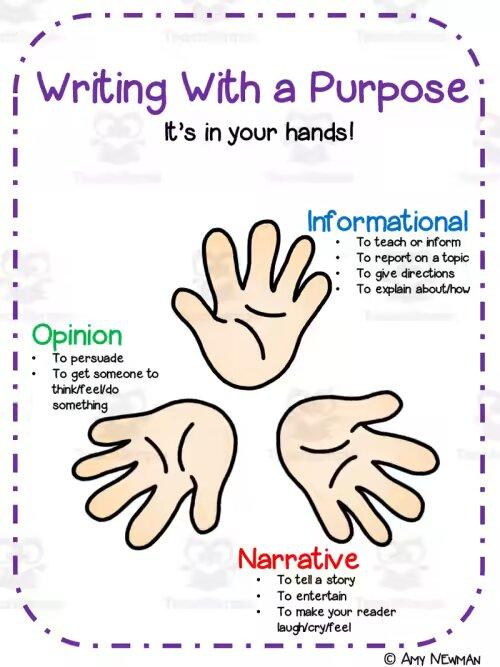
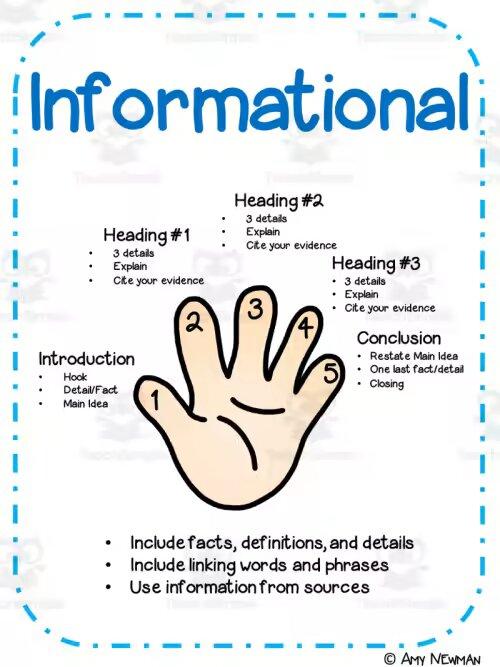

In the pack, you’ll find 10 anchor charts about informational, opinion and narrative writing. Some of the charts are completed and some can be filled in. This allows your students to work independently, or to be guided by you.
Authors give reasons
This resource on how authors give reasons to support their points is aimed at grades 1 – 4.



I find this resource very useful, because it helps the students analyze a text. They need to look for how the or supports their purpose. The pack consists of 4 charts, one of which is complete and three which are interactive.
Author’s purpose anchor chart
This anchor chart asks the key question: Why did the author write the text? It is suitable for grades 1 – 3.


There are two charts: the first is complete, the second has gaps for the students to fill in. I enjoy them using the acronym PIE literally to attract the students’ attention.
The first 21 days: Day 12:
This resource is about Author’s purpose: Reading instruction.


The lesson is suitable for Kindergarten to grade 3. It asks the question ‘Why does an author write?’, which the students can explore through multiple comprehension strategies and activities.
Beyond author’s purpose
This resource is a set of activities to analyze author’s purpose.



You can use this resource in grades 2 – 4. I like the fact that the focus is on finding evidence in a text for determining the author’s purpose. Included are posters, task cards and worksheets.
Author’s purpose worksheet
This worksheet is a blank template for the students to fill in.
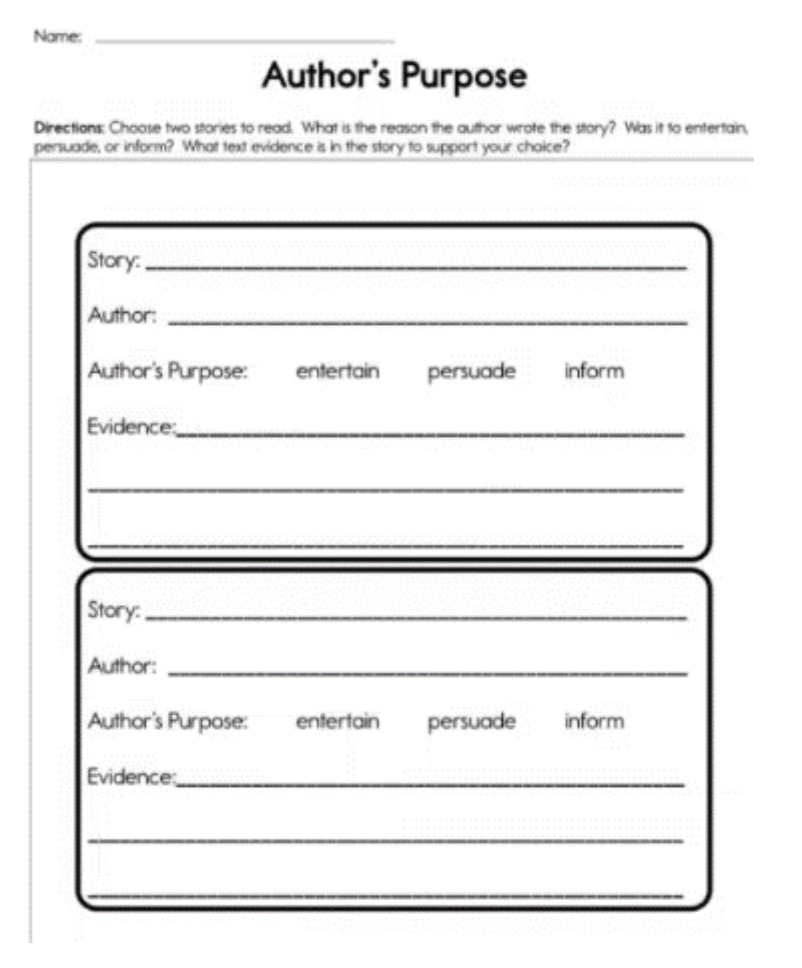
This worksheet is designed for grades 1 – 3, but it can be used, or adapted, for any grade. With just a little tweaking and perhaps some additions, it could even be used in grade 12.
Author Puprose’s Ideas & Inspiration
Easy as pie
This resource is an Author’s Purpose anchor chart that informs the students about the topic.
The resource draws on the acronym PIE (Persuade, Inform, Entertain) for Author’s Purpose. It doesn’t make the links clear, though. The content is effectively set out as an informative anchor chart and will do well on the wall or a noticeboard in your classroom.
Skill focus
This anchor chart tells us what Author’s Purpose is all about
The chart also draws on the acronym PIE (Persuade, Inform, Entertain). It has a 3D element, which grabs the attention. The links are also made clearly to the acronym. It’s written on a piece of folio paper, using handwriting and explanations that are quite accessible for lower grades.
Why did the author write the book?
This anchor chart asks the key question: Why did the author write the book?
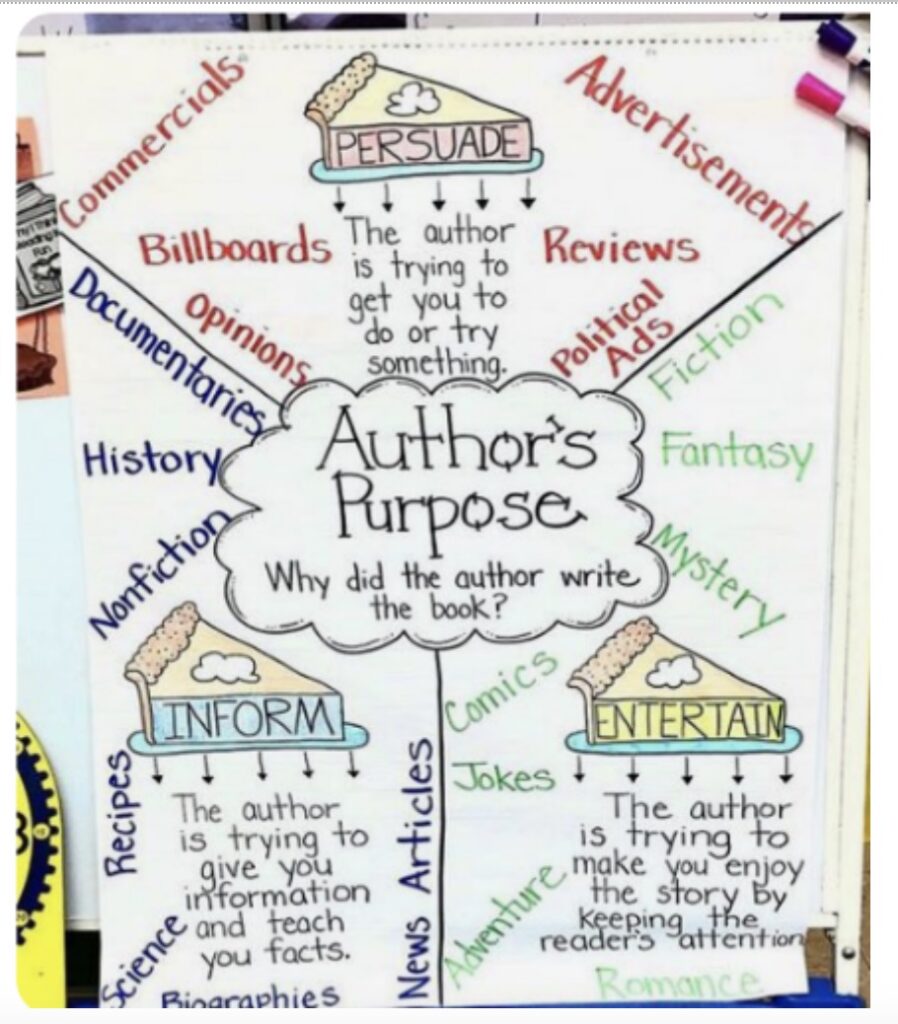
This is another anchor chart that is based on the PIE structure. It’s well organized and quite attractive. It details the types of text in each of the three ‘pie pieces’, which is useful.
Author’s write to…
This anchor chart uses the phrase Author’s write to… as a way to understand the idea of Author’s Purpose.
This anchor chart extends the PIE approach to include ‘explain’. This gives it an even division into quarters. The use of images to fit into each block will help the students recognize texts that fulfil each purpose.
Why did the author write it?
This anchor chart uses the approach of asking ‘Why did the author write it?’
What I like about this chart is the approach that begins by asking about the ‘why’. This is a key question that can be used to get the students thinking. The chart itself looks a little busy here, but you can adapt it.
Author’s purpose and evidence
This anchor chart is based on finding evidence for Author’s Purpose.
This is one of those resources that gives you an idea of how to build up an anchor chart with the students. The emphasis on finding evidence for the different purposes is very useful.
Resources available from other teachers
Author’s purpose ‘lemon’
From Elementary Nest.
The key question asked by this Author’s Purpose anchor chart is ‘Why did the author write the book?’
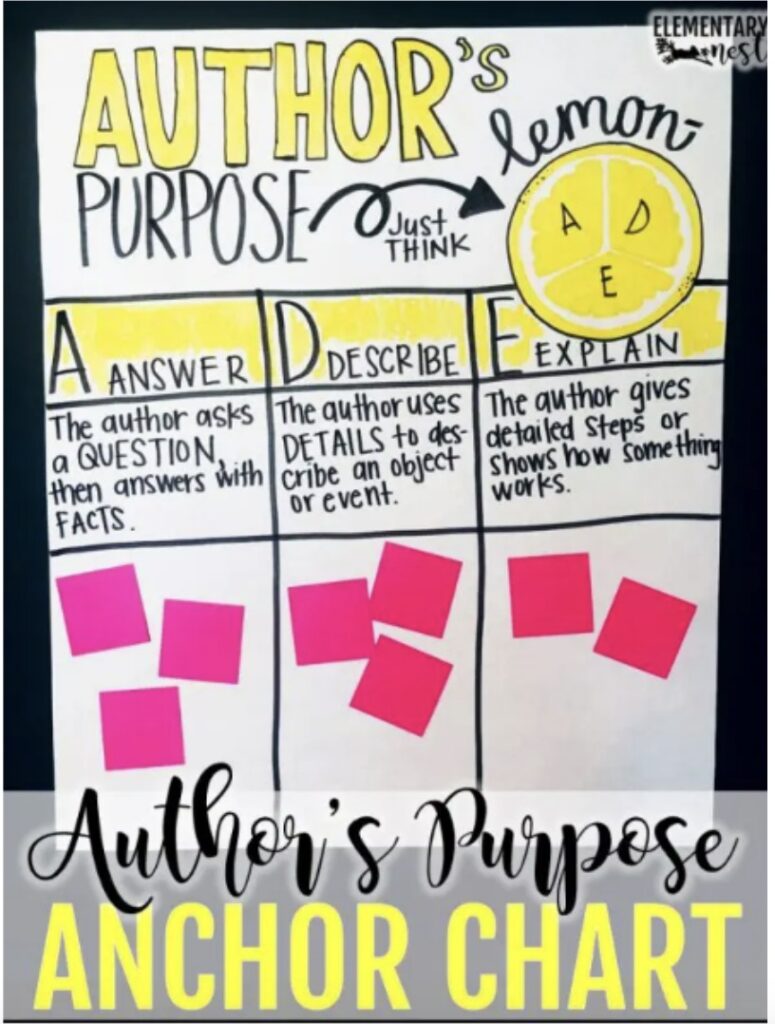
This chart is based on an interactive activity using post-it notes to add to the chart. It is also a move away from the PIE acronym, which is a refreshing approach to Author’s Purpose anchor charts.
Anchor chart from Lab Resources
This Author’s Purpose Anchor Chart also uses the Entertain, Persuade, Inform approach.
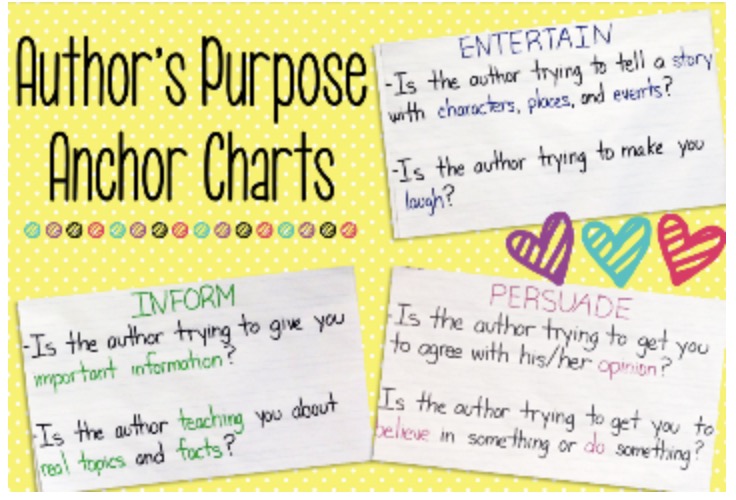
This anchor chart uses the elements of PIE. It focuses on questions to ask. I like this approach, because it puts the emphasis on looking for answers actively. It also uses what look like students’ own notes, with which the students can identify.
An anchor chart for teaching Author’s Purpose
This anchor chart uses Author’s Purpose vs Reader’s Job.
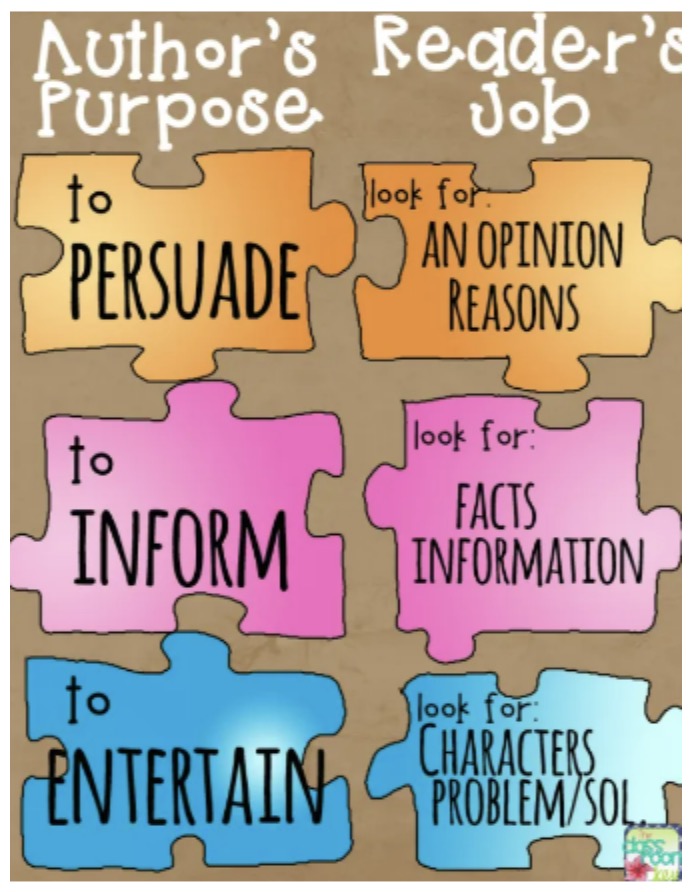
Visually, this anchor chart is appealing, because it uses the image of puzzle pieces. The image also indicates to the students how the two sides of the ‘equation’ work together. What is really great about this anchor chart, though, is the use of Reader’s Job in relation to Author’s Purpose.
Get PIEED in Author’s Purpose
This anchor chart uses an extended acronym: PIEED (persuade, inform, explain, entertain, describe).
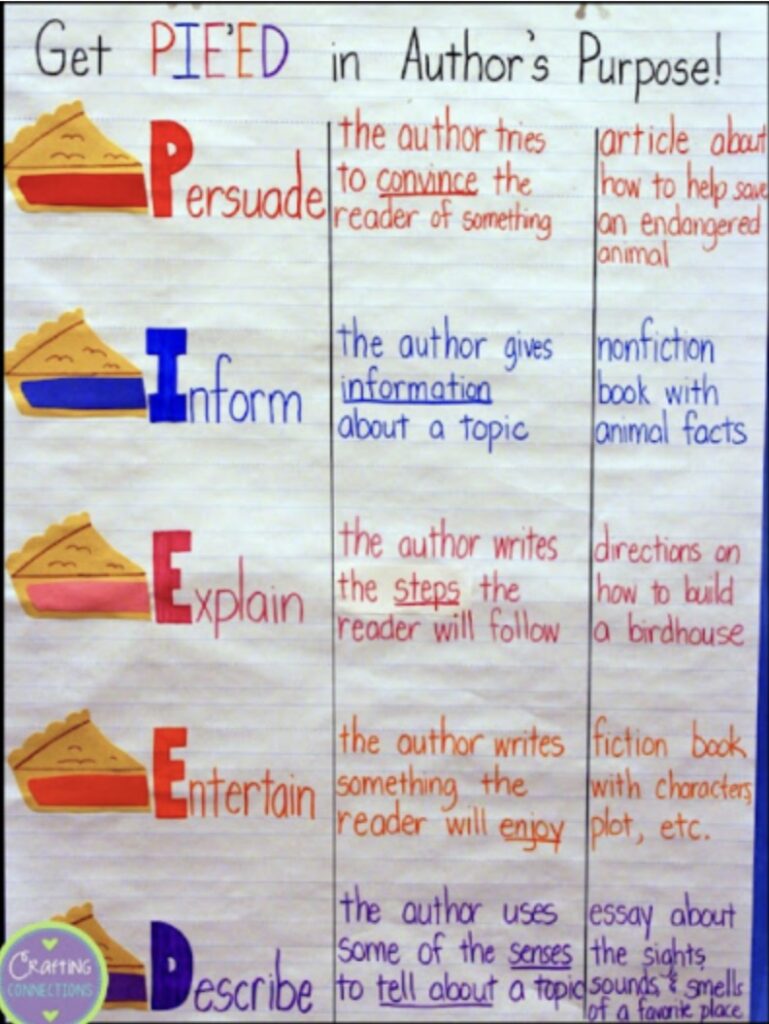
When you look at this anchor chart, it may seem to be a little busy. I can see that it has been designed to be filled in by the students with the teacher. This makes it a great interactive resource. I also like the extended names of the author’s purpose.
Anchor charts to improve writing skills
This chart asks the question: Why writers write.
The initial question the chart asks sets the tone for students to give answers and to look for the answers. Instead of beginning with Author’s Purpose, they build to that, which is a useful way to work.
Different ways of presenting the Author’s Purpose in anchor charts
PIE (persuade, inform, entertain) is a popular acronym for Author’s Purpose anchor. This is useful and the image of the pie is used well to give a visual element to the concept.
PIE doesn’t cover all texts, though. Many texts can be described as being persuasive, informative or entertaining. What about descriptive writing? Or social media posts and text messages? Or sensationalistic reporting, or warning signs as a text?
Some writing has the explicit purpose to shock, or evoke sympathy in the reader. These are things to take into consideration when creating an anchor chart for Author’s Purpose, especially in the higher grades.
This concept can be approached in different ways.
Author’s Purpose anchor chart: Social media texts
In addition to the purpose of informing or persuading, a social media text can also be written with the intention of:
- Commenting
- Sharing
- Telling a story
- Respond
- Drawing attention
- Staying in touch
- Sensationalizing
This can easily be reflected in an Author’s Purpose anchor chart.
I suggest that the chart is headed ‘Author’s purpose in social media texts.’ Begin by identifying different types of social media texts, then progress to discussing why each one is created.
By doing this, you can fill in the anchor chart.
Author vs Reader
Foregrounding the reader is a great way to work with the concept of Author’s Purpose. How do you know the author’s intention is to persuade you if you can’t find it as a reader?
In fact, it’s also effective to turn the whole concept of Author’s Purpose around and look at the role of the Reader first.
For example:
Begin with at text. Depending on the grade, you can read it to the class, or they can read it themselves.
Ask targeted questions to work towards identifying the Author’s Purpose.
Final thoughts about Author’s Purpose anchor charts
Anchor charts for Author’s Purpose are largely based on the acronym PIE. This is useful as a starting point, particularly for lower grades. It is also relatively limiting, though. When you design or look for an anchor chart, give your students the opportunity to get to grips with the intention someone has when they write. You’ll be able to work this into an effective and useful Author’s Purpose anchor chart.

